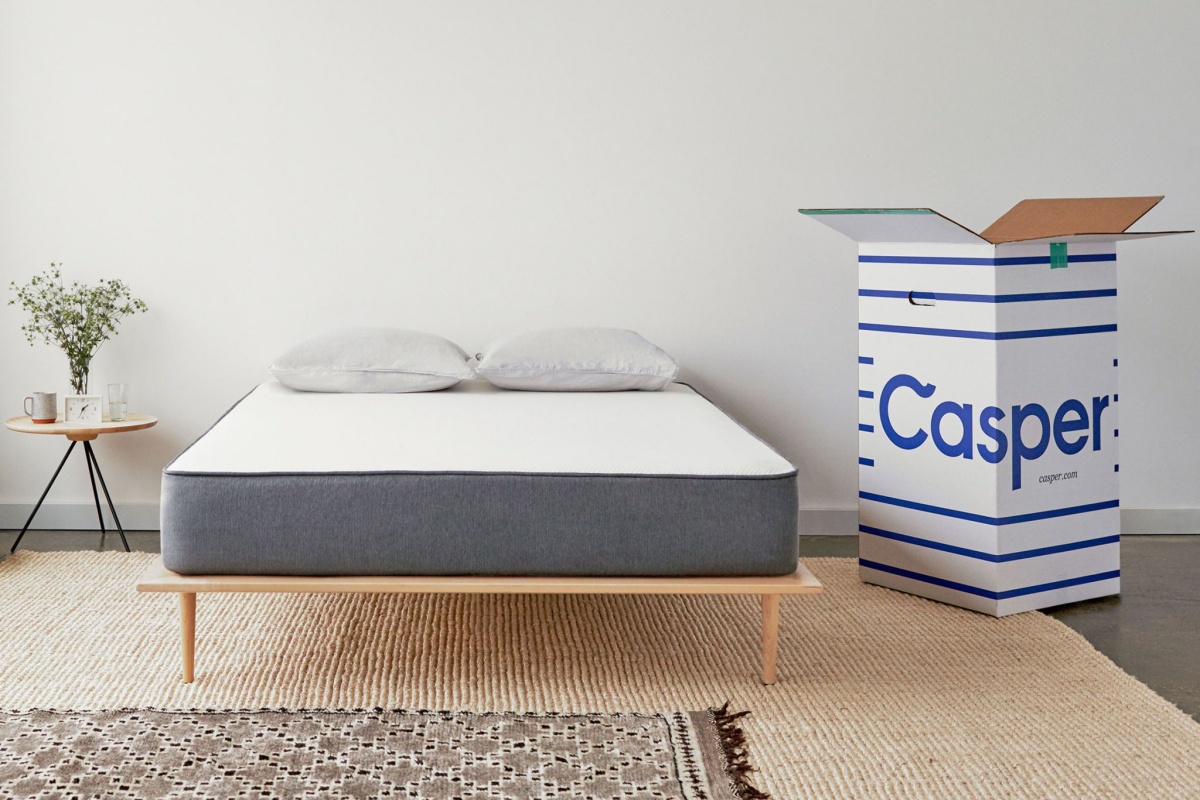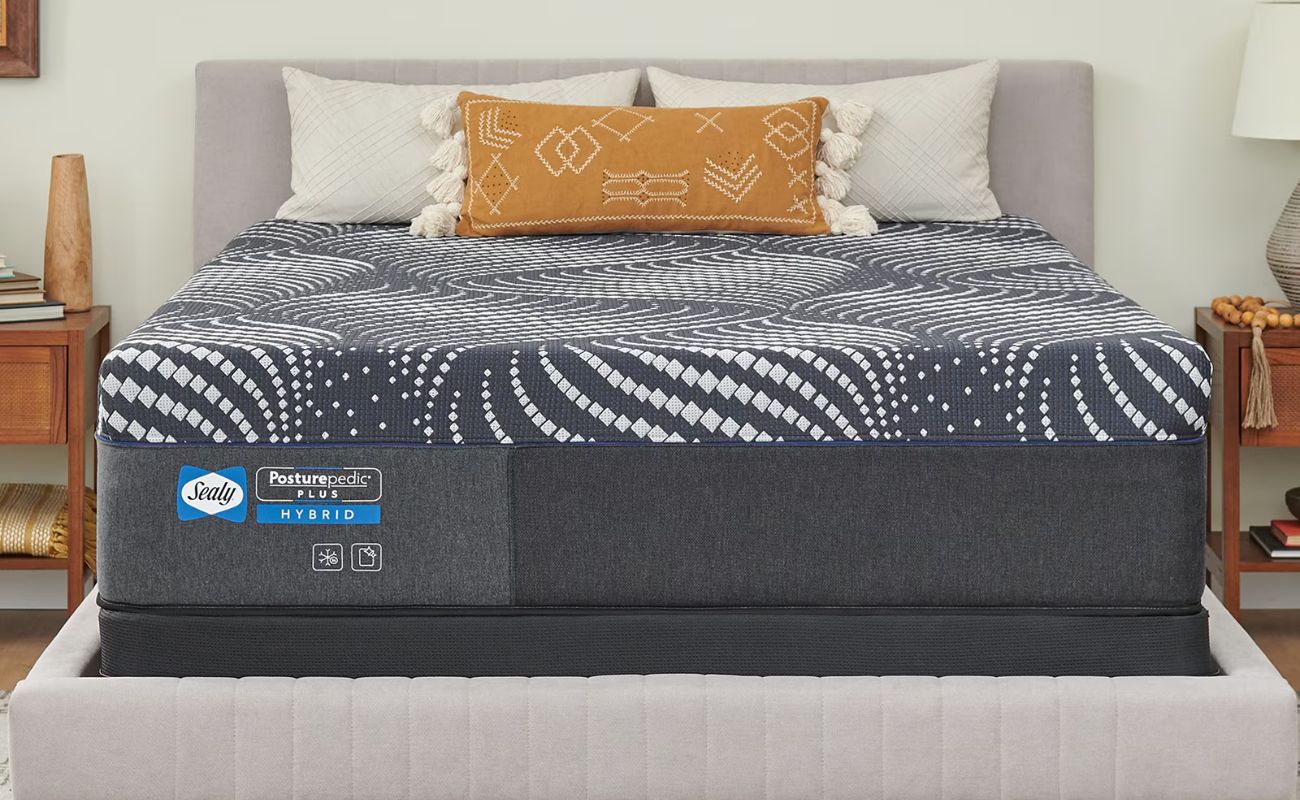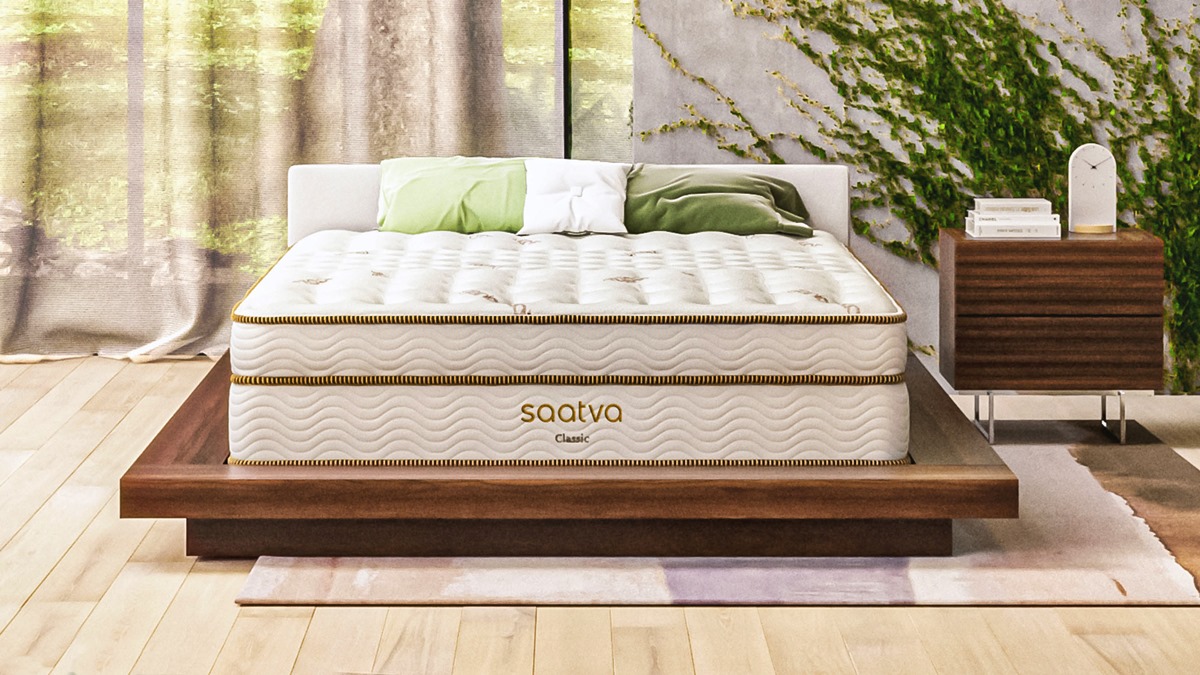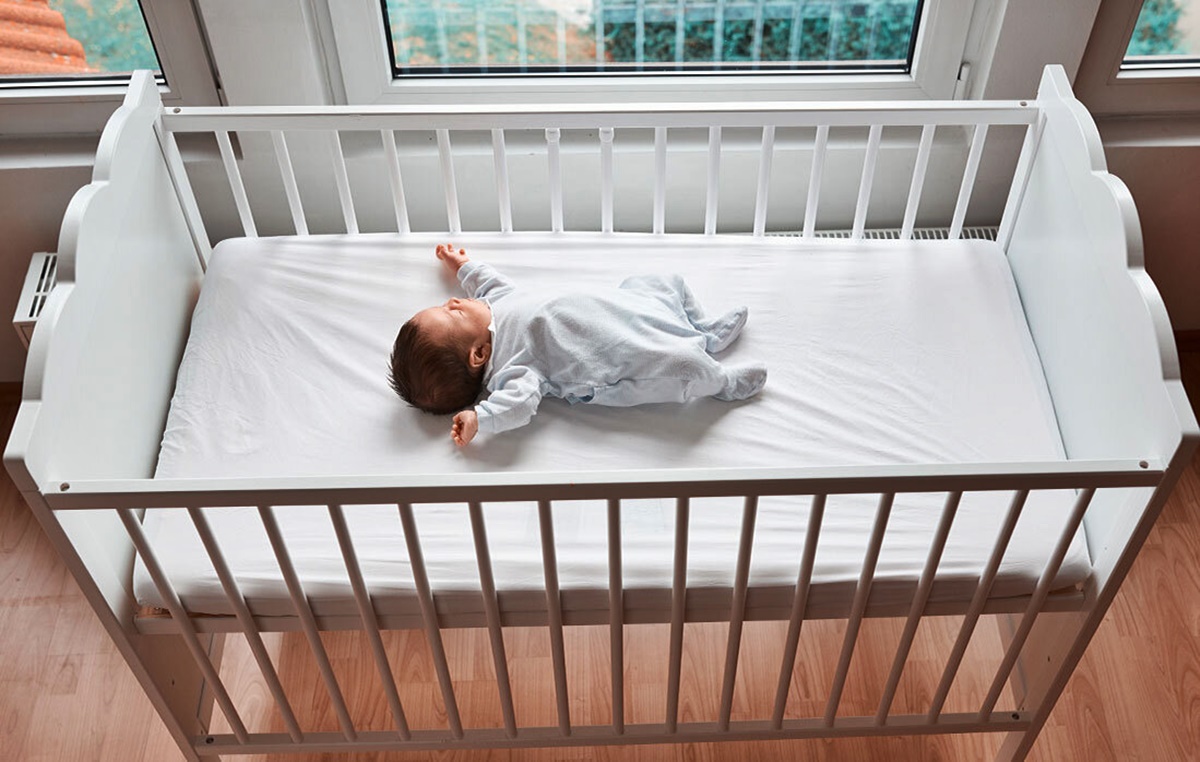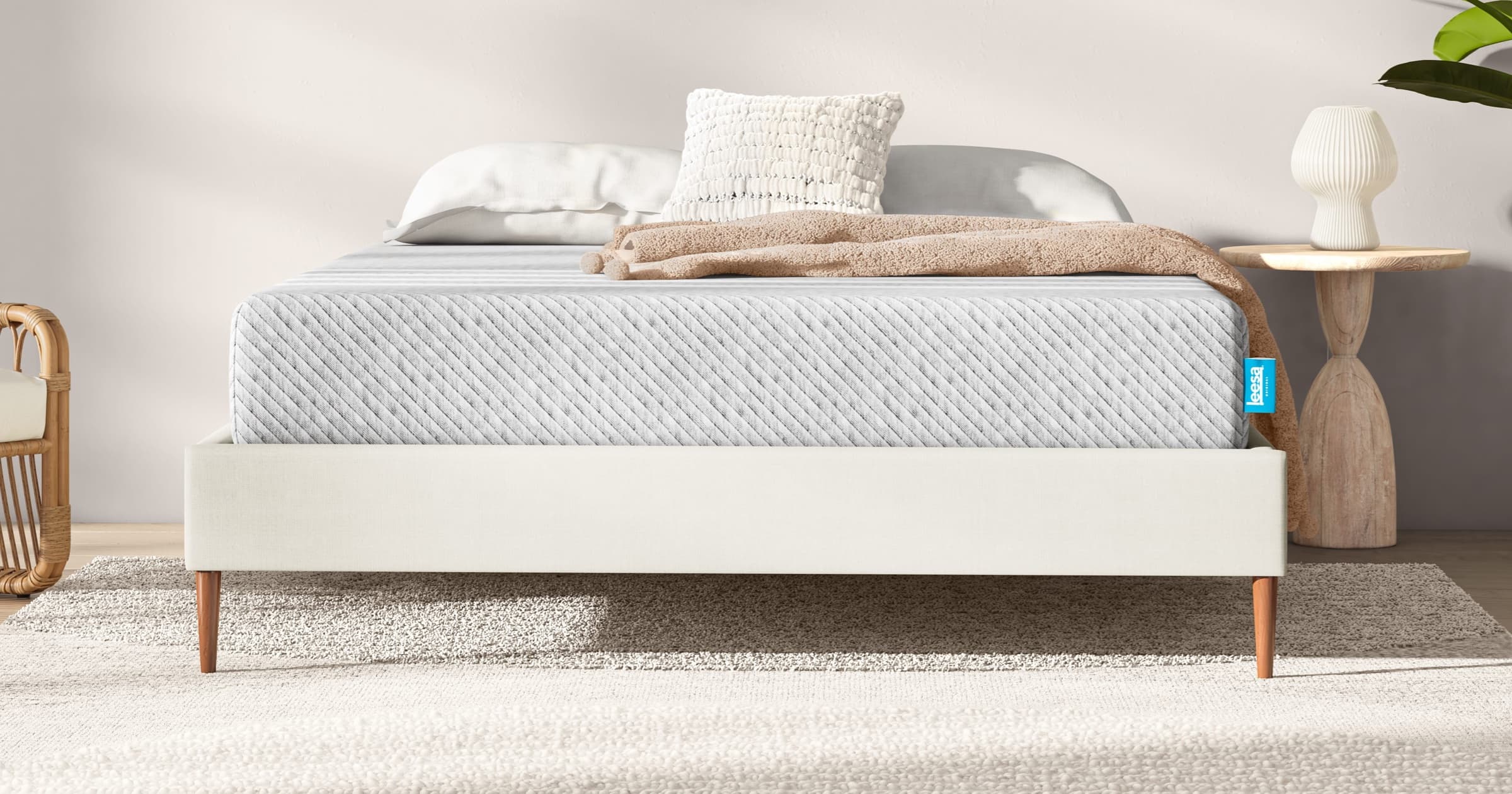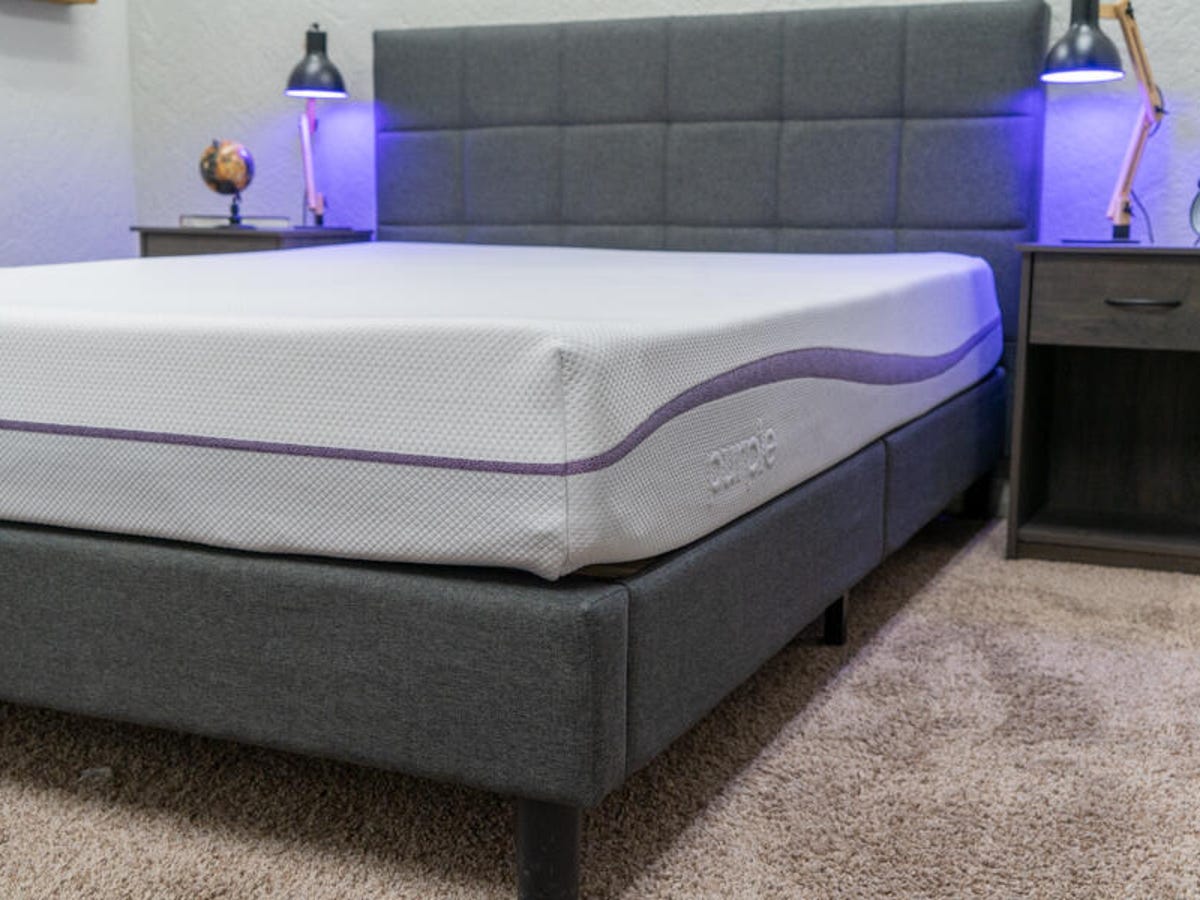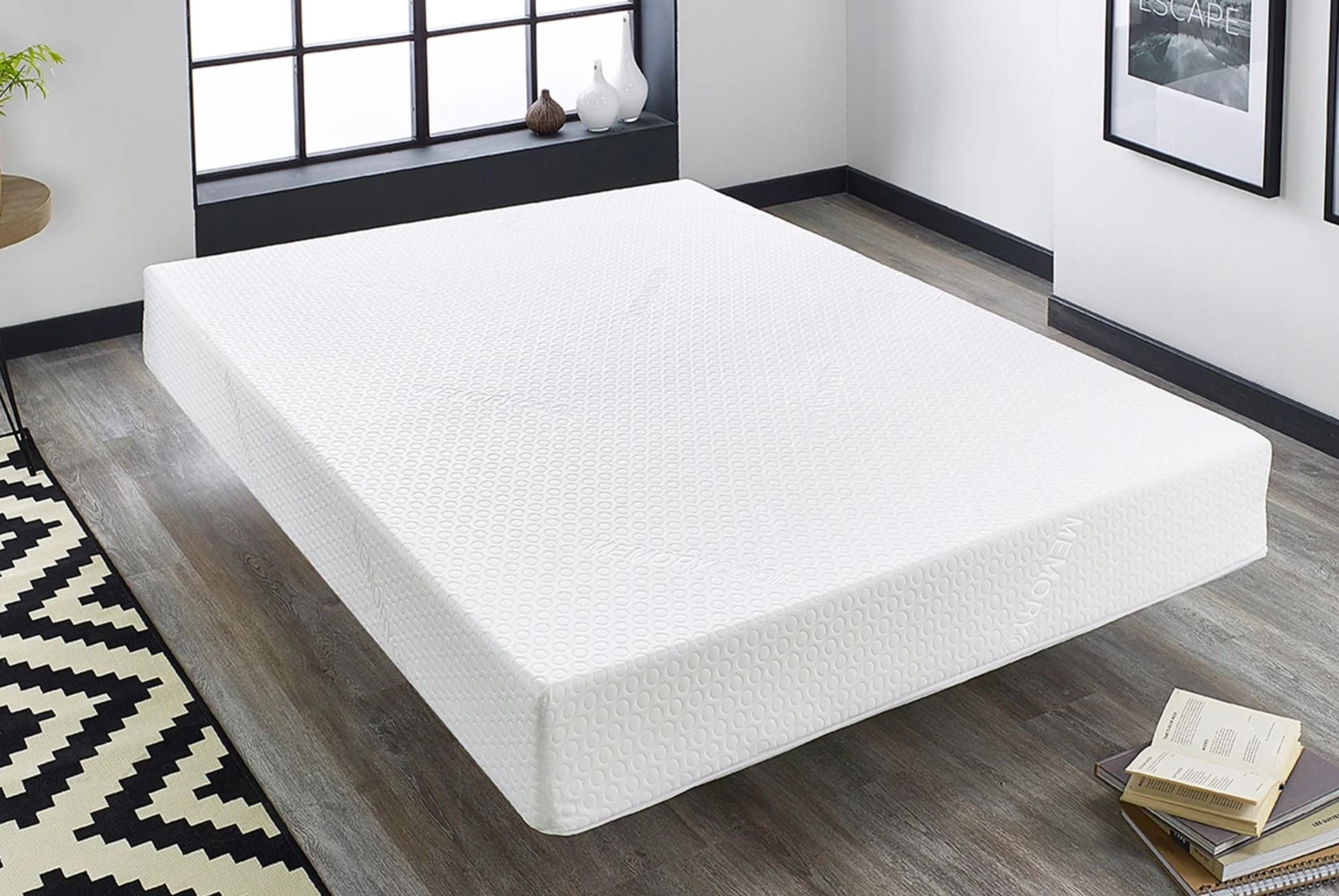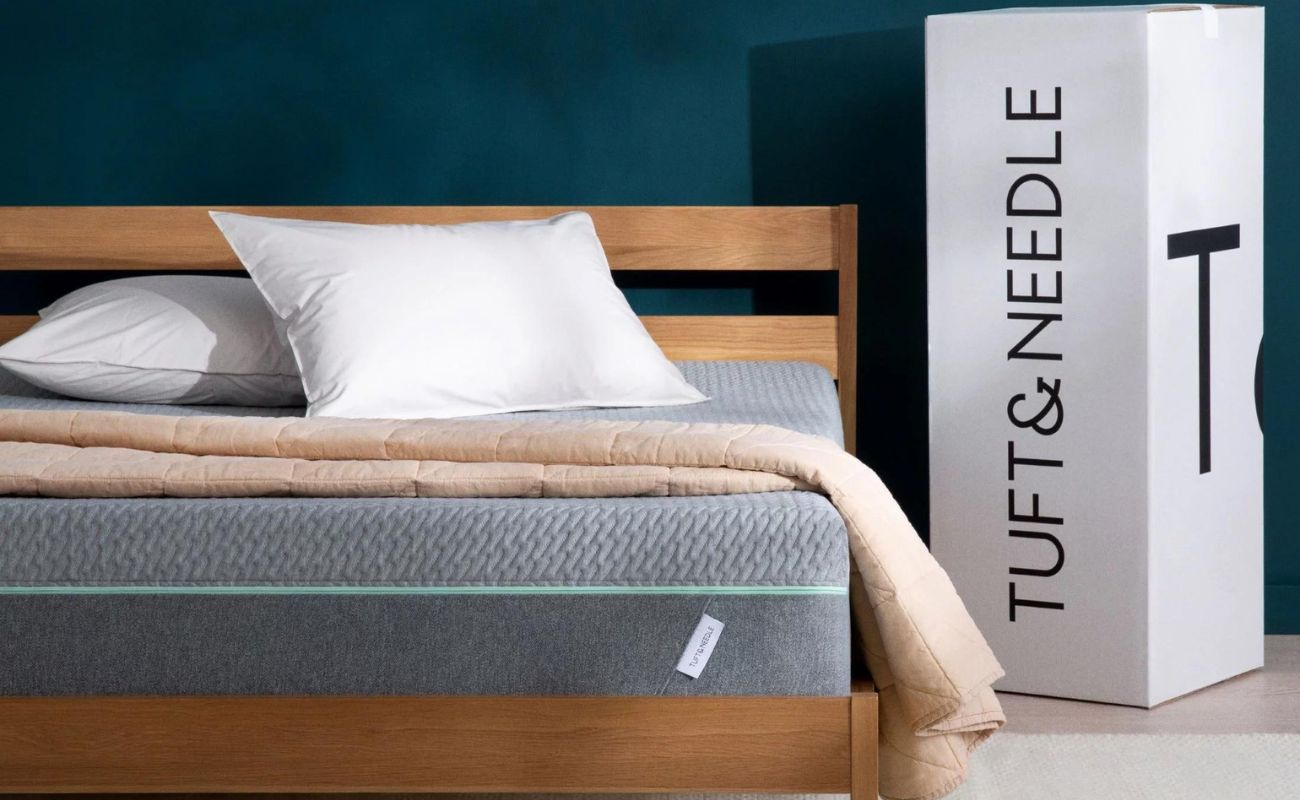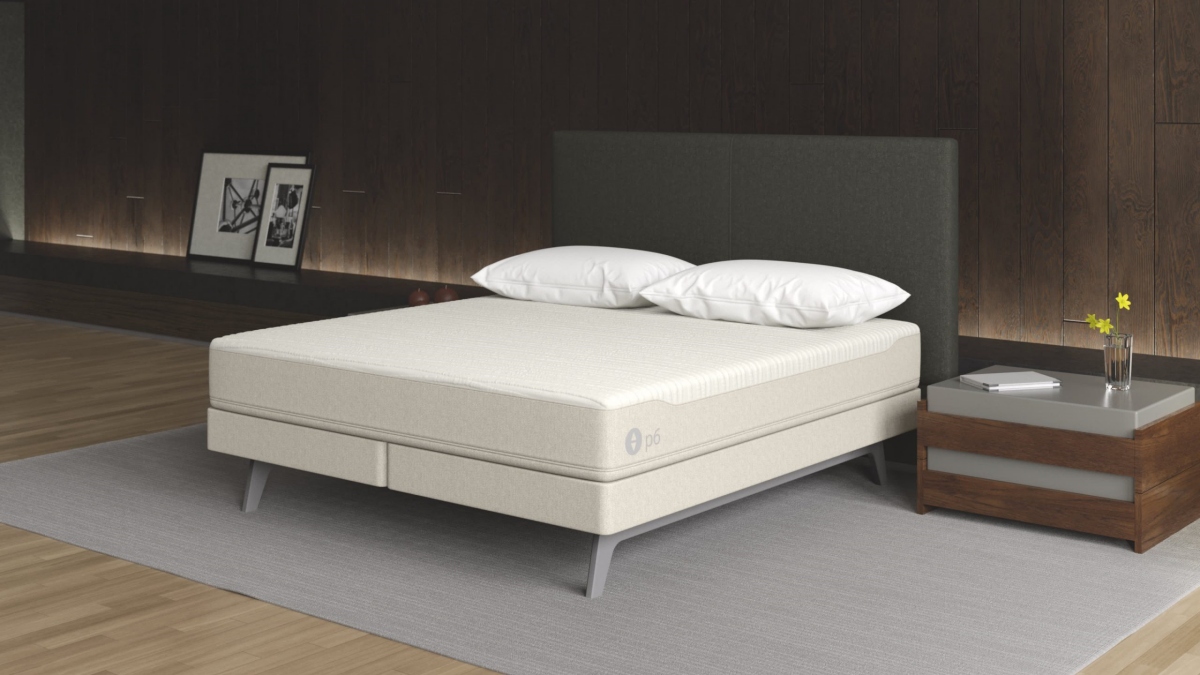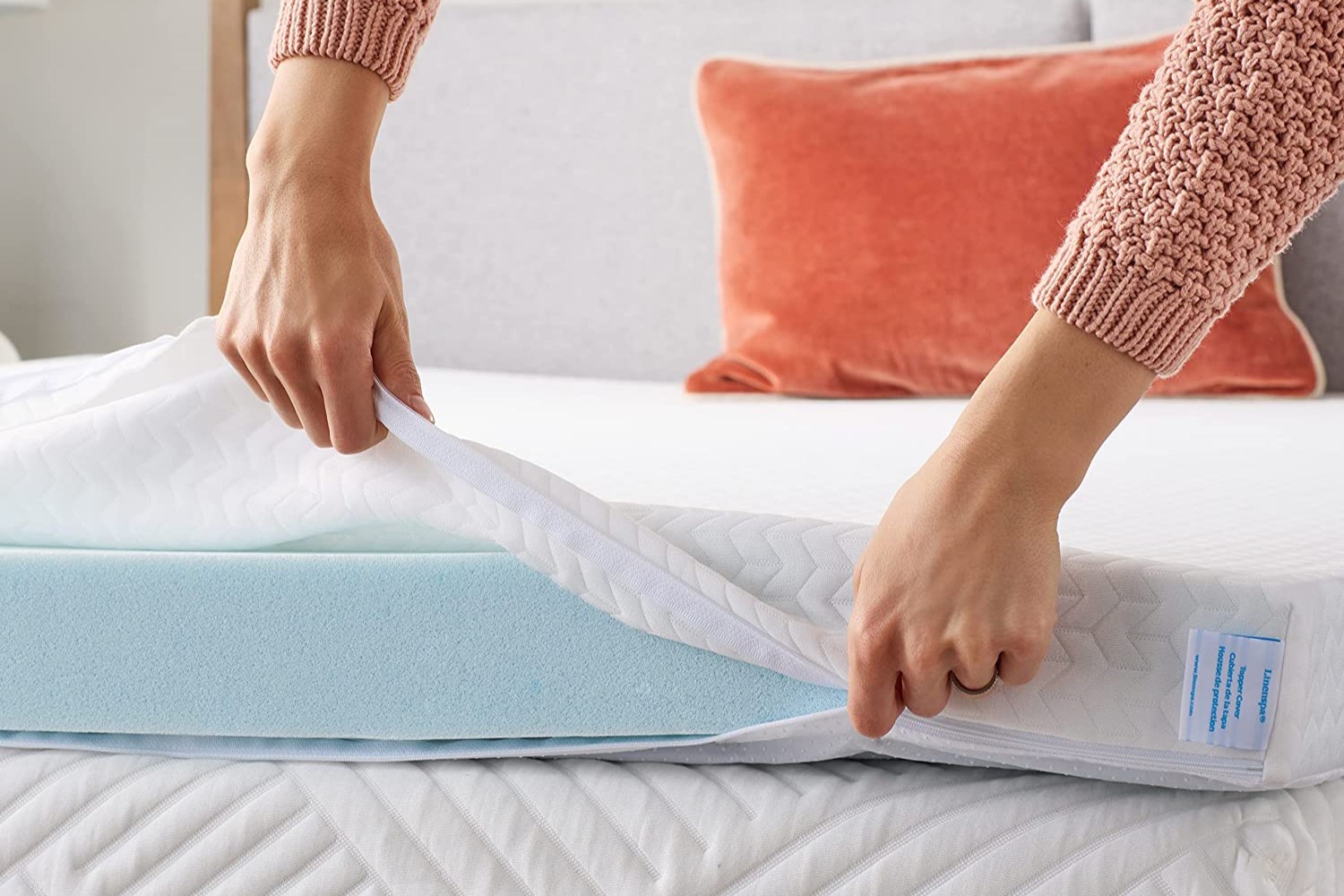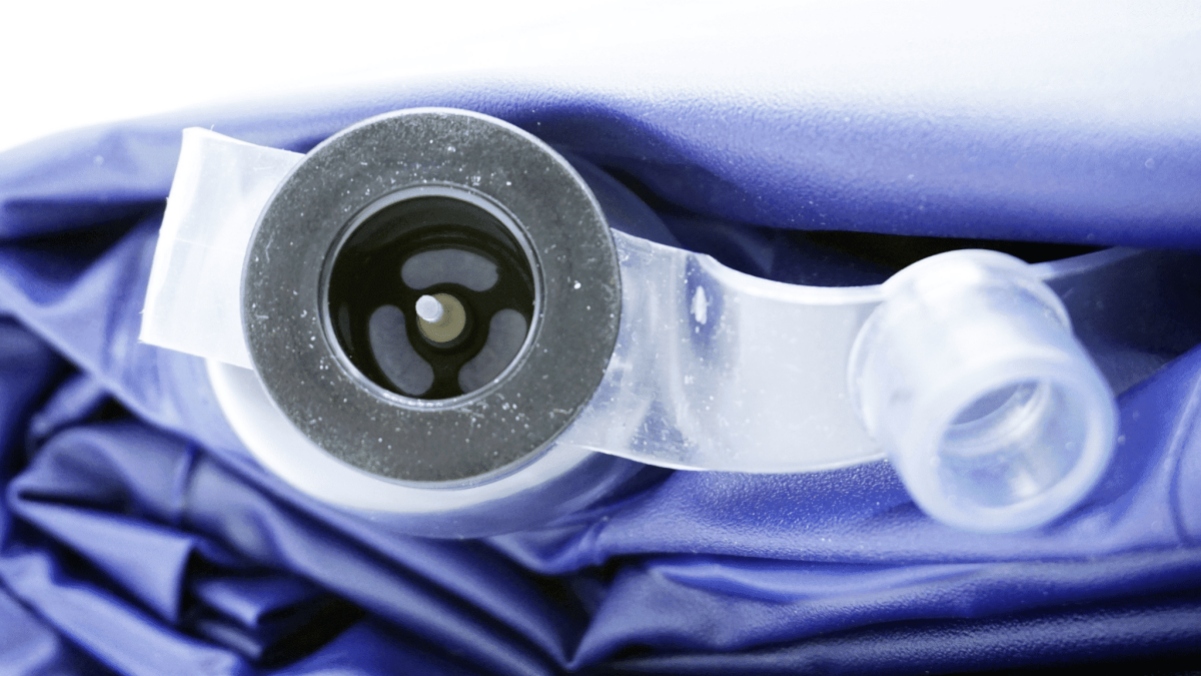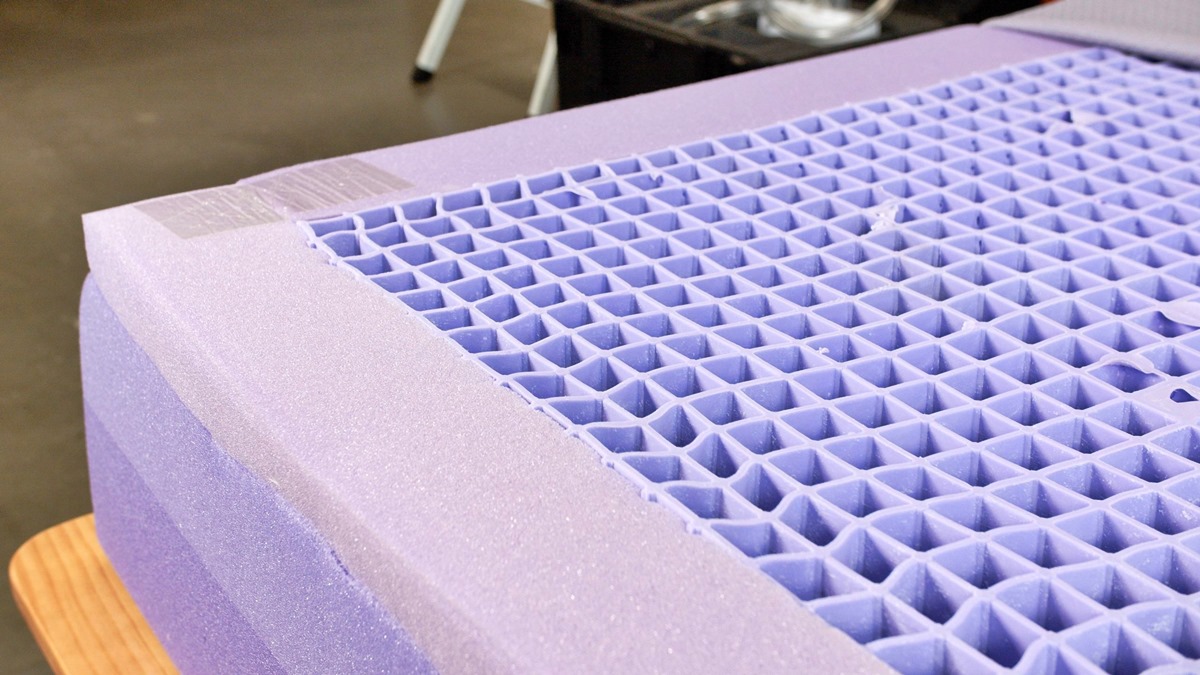Home>Furniture>Bedroom Furniture>How Long Does A Mattress Last
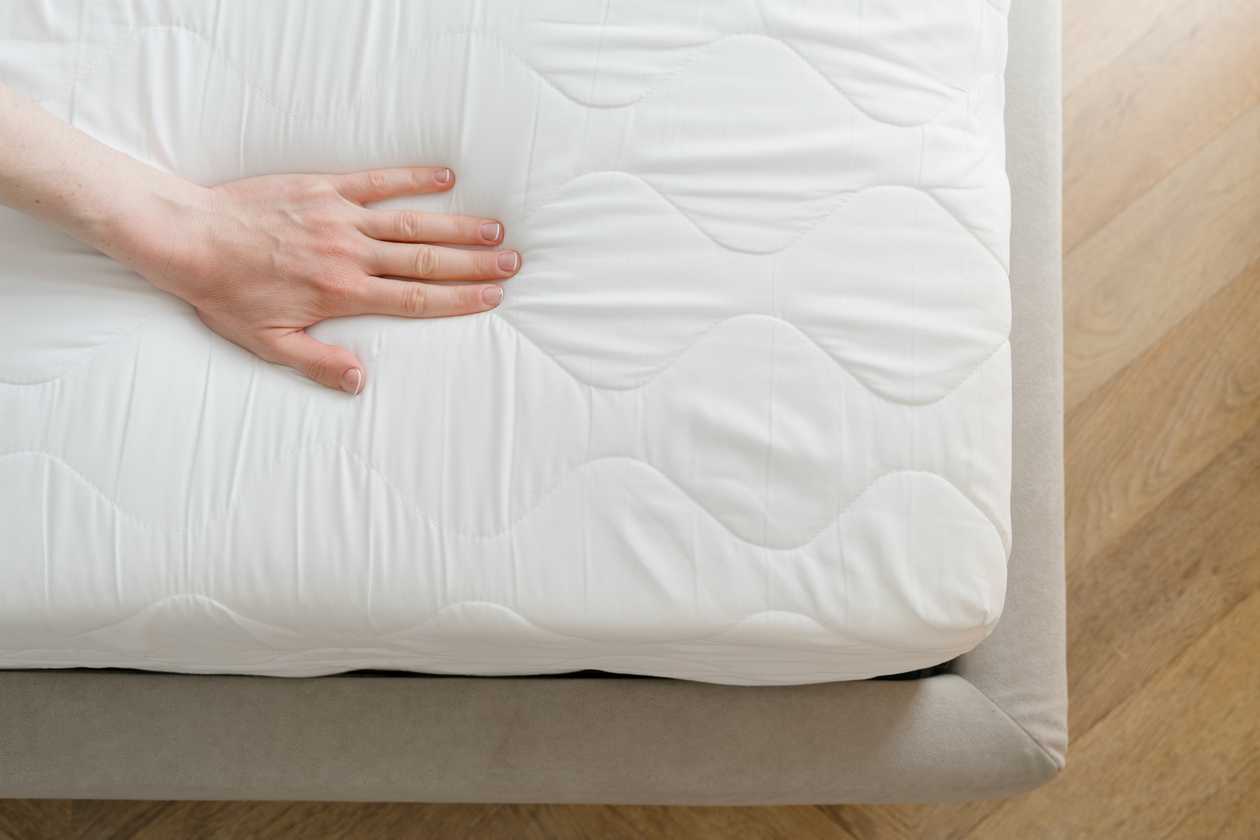

Bedroom Furniture
How Long Does A Mattress Last
Modified: February 25, 2024
Discover how long a mattress typically lasts and when it's time to replace it. Explore our range of durable bedroom furniture for a restful night's sleep.
(Many of the links in this article redirect to a specific reviewed product. Your purchase of these products through affiliate links helps to generate commission for Storables.com, at no extra cost. Learn more)
Introduction
When it comes to creating a cozy and comfortable haven, your bedroom is the ultimate retreat. And at the heart of this sanctuary is your bed, with the mattress being the most critical component. A good night’s sleep is essential for overall well-being, and a durable and supportive mattress is key to achieving that.
But how long does a mattress last? This is a common question many people have when it comes to investing in bedroom furniture. While the lifespan of a mattress can vary depending on several factors, understanding the average lifespan and signs of wear can help you determine when it’s time to replace your mattress.
In this article, we will explore the factors that affect the lifespan of a mattress, the typical lifespan of different mattress types, and the signs that indicate it’s time for a new one. We will also provide helpful tips on how to extend the lifespan of your mattress to get the most out of your investment. So, let’s dive in!
Key Takeaways:
- The lifespan of a mattress is influenced by factors like material quality, type, weight, and maintenance. Understanding these factors can help you make an informed decision when purchasing a new mattress.
- Signs that your mattress needs replacement include sagging, wear and tear, allergies, discomfort, and lack of edge support. Regular maintenance and care can help extend the lifespan of your mattress, ensuring years of restful sleep.
Read more: How Long Does A Mattress Last?
Factors Affecting Mattress Lifespan
Several factors can impact the lifespan of a mattress, determining how long it will last before it needs to be replaced. Understanding these factors can help you make an informed decision when shopping for a new mattress. Here are some key factors to consider:
- Quality of Materials: The quality of the materials used in a mattress plays a significant role in its durability. Higher-quality materials tend to be more resilient and can withstand everyday wear and tear, resulting in a longer lifespan.
- Mattress Type: Different mattress types have varying lifespans. Innerspring mattresses, for example, typically last around 7-10 years, while memory foam mattresses tend to last around 10-15 years. Hybrid mattresses, which combine innerspring and foam components, can have a lifespan of 8-12 years.
- Weight and Usage: The weight of the sleepers and the frequency of use can impact mattress lifespan. Heavier individuals may exert more pressure on the mattress, causing it to wear out more quickly. Similarly, if a mattress is used regularly or subjected to more rigorous activities, such as jumping or rough play, it may not last as long.
- Maintenance and Care: Proper maintenance and care can significantly extend the lifespan of a mattress. Regularly rotating or flipping the mattress can distribute the wear more evenly. Additionally, using a mattress protector can help prevent spills, stains, and dust accumulation, keeping the mattress in better condition.
- Environmental Factors: The environment in which a mattress is kept can also affect its lifespan. Exposure to moisture, excessive heat, and direct sunlight can contribute to the degradation of materials over time. It’s important to keep your mattress in a dry and well-ventilated area to minimize these potential damaging effects.
By considering these factors, you can make an informed decision when purchasing a new mattress and ensure that you take appropriate measures to extend its overall lifespan.
Typical Lifespan of Different Mattress Types
The lifespan of a mattress can vary depending on its type. Different mattress types offer varying levels of support and durability, affecting how long they will last before needing to be replaced. Let’s take a closer look at the typical lifespan of the most common mattress types:
- Innerspring Mattresses: Innerspring mattresses are constructed with a support system of metal coils and are known for their bouncy feel. On average, an innerspring mattress lasts between 7-10 years. However, it’s important to note that higher-end innerspring mattresses with better-quality materials can potentially last longer.
- Memory Foam Mattresses: Memory foam mattresses are made from a high-density polyurethane foam that contours to your body and provides excellent pressure relief. These mattresses have a longer lifespan compared to innerspring mattresses, typically lasting between 10-15 years. The durability of memory foam mattresses can be attributed to the density and quality of the foam used in their construction.
- Latex Mattresses: Latex mattresses are known for their responsiveness and natural hypoallergenic properties. They are made from latex foam, which can be either natural or synthetic. A latex mattress has an average lifespan of 10-15 years, depending on its quality. Natural latex mattresses tend to be more durable and can last longer than synthetic ones.
- Hybrid Mattresses: Hybrid mattresses combine the support of innerspring coils with the comfort of foam or latex layers. These mattresses offer a balance of pressure relief, support, and durability. The lifespan of a hybrid mattress typically falls between 8-12 years, depending on the quality of the materials used.
It’s important to note that these are general guidelines, and the lifespan of a mattress can be influenced by other factors such as usage, maintenance, and individual factors such as weight and sleeping habits. Regularly assessing the condition of your mattress and being attuned to any signs of wear will help you determine when it’s time for a replacement.
A mattress typically lasts 7-10 years, but this can vary based on quality, usage, and care. Rotate your mattress regularly to promote even wear and consider using a mattress protector to extend its lifespan.
Signs That Your Mattress Needs to Be Replaced
While the average lifespan of a mattress can give you an idea of when it might be time for a replacement, there are certain signs to watch out for that indicate your mattress is no longer providing the support and comfort you need for a good night’s sleep. Here are some common signs that your mattress needs to be replaced:
- Sagging or Indentations: If you notice visible sagging or indentations on your mattress, especially in the areas where you sleep, it’s a clear sign that the support system of the mattress has deteriorated. This can lead to discomfort and inadequate support for your body, making it difficult to get a restful sleep.
- Noticeable Wear and Tear: Over time, mattresses can develop wear and tear, such as frayed edges, loose threads, or broken springs. If you observe significant damage or deterioration in the mattress’s overall condition, it may be time to consider a replacement for optimal sleep quality and safety.
- Increase in Allergies or Asthma Symptoms: Mattresses can collect dust mites, allergens, and other contaminants over time, which can worsen allergies or trigger asthma symptoms. If you notice an increase in allergic reactions or respiratory issues when lying on your mattress, it might be an indication that it needs to be replaced.
- Constant Discomfort or Restlessness: If you find yourself waking up frequently during the night due to discomfort, stiffness, or pain, it’s a sign that your mattress is no longer providing adequate support. A good mattress should promote proper spinal alignment and relieve pressure points, allowing you to wake up feeling refreshed and rejuvenated.
- Lack of Edge Support: Edge support is important, especially for individuals who use the edges of the mattress when sitting or getting in and out of bed. If the edges of your mattress have significantly worn down or lack support, it can lead to instability and a risk of falling off the bed.
If you experience any of these signs, it’s a strong indication that it’s time to replace your mattress. Investing in a new mattress will not only improve your sleep quality but also contribute to your overall health and well-being.
Tips to Extend the Lifespan of Your Mattress
A mattress is a significant investment, and taking proper care of it can help prolong its lifespan, allowing you to enjoy comfortable and restful sleep for years to come. Here are some tips to help you extend the lifespan of your mattress:
- Use a Mattress Protector: Using a mattress protector is a simple yet effective way to safeguard your mattress from spills, stains, dust, and allergens. A waterproof and breathable mattress protector creates a barrier between your body and the mattress, helping to keep it clean and hygienic.
- Regularly Rotate and Flip: To ensure even wear, rotate your mattress from head to toe every three to six months. If your mattress is double-sided, flip it as well. This helps to distribute the weight and pressure more evenly, preventing sagging and prolonging the overall lifespan.
- Maintain Proper Support: Make sure your mattress is properly supported by a sturdy bed frame or foundation. A mattress that lacks proper support can sag or become uneven, leading to discomfort and reduced durability. Refer to the mattress manufacturer’s guidelines for the recommended type of support needed.
- Keep it Clean: Regularly vacuuming your mattress and keeping it free of dust and debris can help prevent the buildup of allergens and extend its lifespan. If your mattress has removable covers, follow the manufacturer’s instructions for cleaning to keep it fresh and hygienic.
- Avoid Jumping on the Bed: While it may be tempting, avoid jumping or standing on your mattress as it can put unnecessary strain on the springs and foam layers, causing them to degrade more quickly.
- Be Gentle with Handles: Most mattresses come with handles that are designed to assist with moving or adjusting the mattress. However, it’s important to use these handles with care to avoid tearing or damaging the fabric.
- Avoid Excess Moisture: Moisture can lead to mold and mildew growth, which can be detrimental to the lifespan of your mattress. Avoid placing your mattress directly on the floor or in damp areas. If a spill occurs, blot it immediately and allow the mattress to dry thoroughly before using it again.
- Follow Weight Limitations: Every mattress has weight limitations specified by the manufacturer. It’s important to adhere to these guidelines to ensure the longevity of your mattress. Overloading the mattress with excessive weight can cause it to wear out faster and lose its supportive qualities.
- Regularly Air Out: To help keep your mattress fresh, allow it to air out by removing the bedding and opening windows or using fans to improve airflow. This can help reduce the buildup of odors and moisture, contributing to a healthier sleep environment.
- Replace Old Bedding: Using old, worn-out bedding can transfer unwanted elements to your mattress, such as dust, allergens, and pests. Regularly replace your pillows, sheets, and mattress toppers to maintain cleanliness and prevent these elements from affecting the longevity of your mattress.
By implementing these tips, you can extend the lifespan of your mattress and maximize your investment. Remember, proper care and maintenance are essential for a mattress to provide you with years of comfortable and restorative sleep.
Read more: How Long Does A Foam Mattress Last
Conclusion
A mattress is more than just a piece of bedroom furniture; it is the foundation of a good night’s sleep and plays a vital role in your overall well-being. Understanding the factors that affect mattress lifespan, the typical lifespan of different mattress types, and the signs that indicate it’s time for a replacement can help you make informed decisions when it comes to your sleep comfort.
Factors such as the quality of materials, mattress type, weight and usage, maintenance and care, and environmental conditions can all impact how long a mattress will last. However, on average, innerspring mattresses tend to last around 7-10 years, memory foam mattresses around 10-15 years, and latex mattresses and hybrid mattresses between 8-12 years.
Knowing the signs that indicate your mattress needs to be replaced is equally important. Look out for sagging, noticeable wear and tear, an increase in allergies or asthma symptoms, constant discomfort or restlessness, and a lack of edge support.
To extend the lifespan of your mattress, use a mattress protector, regularly rotate and flip the mattress, maintain proper support, keep it clean, avoid jumping on the bed, be gentle with handles, avoid excess moisture, follow weight limitations, regularly air out the mattress, and replace old bedding.
Investing in a new mattress when the time is right will not only improve your sleep quality but also contribute to your overall health and well-being. By taking proper care of your mattress, you can ensure that it will continue to provide you with a comfortable and supportive sleep surface for years to come.
Remember, a good night’s sleep starts with a quality mattress, so take the time to research and choose the right one for your needs. Your body and mind will thank you for it!
Frequently Asked Questions about How Long Does A Mattress Last
Was this page helpful?
At Storables.com, we guarantee accurate and reliable information. Our content, validated by Expert Board Contributors, is crafted following stringent Editorial Policies. We're committed to providing you with well-researched, expert-backed insights for all your informational needs.
